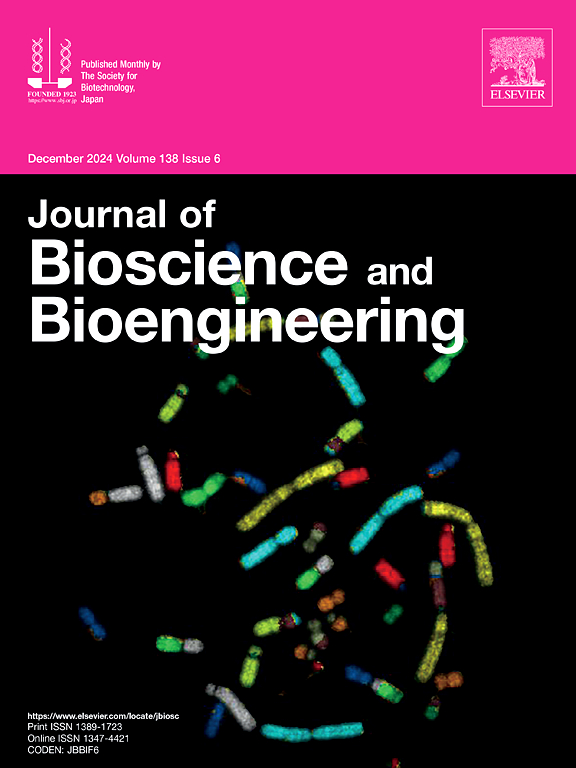ROS 响应型纳米载体,用于口服输送单链蛋白并增强对氧化应激的缓解作用。
IF 2.9
4区 生物学
Q3 BIOTECHNOLOGY & APPLIED MICROBIOLOGY
引用次数: 0
摘要
氧化应激是由活性氧(ROS)的过量产生引起的,在各种疾病的发生发展中起着至关重要的作用。Monascin具有清除ROS和缓解氧化应激的作用,但发酵率和生物利用度较低。本研究通过优化发酵工艺提高monascin的产量(508.6 U/mL),并通过HPLC、HPLC- ms、1H NMR和13C NMR对其结构进行了系统表征。此外,我们创新地用硒修饰羧甲基纤维素钠(CMC-Se)包封monascin (monascin@CMC-Se),可以对ROS敏感响应并释放monascin,有效清除过量的ROS。此外,monascin@CMC-Se还能通过提高红曲霉素的细胞摄取速率,显著提高红曲霉素的生物可及性,缓解细胞氧化应激。总之,我们的工作提供了原则性证据,证明CMC-Se可以将monascin精确递送到对胃液具有高抵抗力的氧化应激环境中,为克服结肠炎症相关疾病奠定了基础。本文章由计算机程序翻译,如有差异,请以英文原文为准。

ROS-responsive nanocarrier for oral delivery of monascin and enhanced alleviation of oxidative stress
Oxidative stress, caused by excessive production of reactive oxygen species (ROS), plays a crucial role in the occurrence and development of various diseases. Monascin can scavenge ROS and alleviate oxidative stress but with a low fermentation rate and bioavailability. Here, we optimized the fermentation process to increase the production of monascin (508.6 U/mL), and then systematically characterized its structure via HPLC, HPLC-MS, 1H NMR, and 13C NMR. Additionally, we innovatively modified carboxymethylcellulose sodium with selenium (CMC-Se) to encapsulate monascin (monascin@CMC-Se), which can sensitively respond to ROS and release monascin to effectively scavenge excessive ROS. Besides, the monascin@CMC-Se can significantly increase the bioaccessibility of monascin and alleviate cellular oxidative stress by enhancing its cellular uptake rate. Collectively, our work provides proof-of-principle evidence that the CMC-Se can precise delivery of monascin to an oxidatively stressed environment with high resistance to gastric fluids, laying a foundation to overcome inflammation-related diseases in the colon.
求助全文
通过发布文献求助,成功后即可免费获取论文全文。
去求助
来源期刊

Journal of bioscience and bioengineering
生物-生物工程与应用微生物
CiteScore
5.90
自引率
3.60%
发文量
144
审稿时长
51 days
期刊介绍:
The Journal of Bioscience and Bioengineering is a research journal publishing original full-length research papers, reviews, and Letters to the Editor. The Journal is devoted to the advancement and dissemination of knowledge concerning fermentation technology, biochemical engineering, food technology and microbiology.
 求助内容:
求助内容: 应助结果提醒方式:
应助结果提醒方式:


